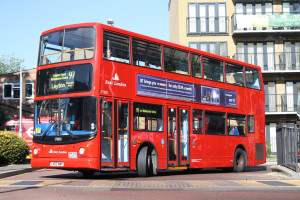A Guide To East London
 Recent years have shown a steady increase in the total number of foreign students looking to obtain higher education in London. Not just students, but the rate of foreign employment has also increased tremendously. Whenever a person decides to change his base, there’s always a certain degree of curiosity involved to know more about the country, before packing bags. This guide will focus on useful information for people looking to migrate or travel to the East London.
Recent years have shown a steady increase in the total number of foreign students looking to obtain higher education in London. Not just students, but the rate of foreign employment has also increased tremendously. Whenever a person decides to change his base, there’s always a certain degree of curiosity involved to know more about the country, before packing bags. This guide will focus on useful information for people looking to migrate or travel to the East London.
History Of East London
East London is situated in the northeastern part of London, United Kingdom. Even though it has not been officially claimed, but the eastern section of the London city was known as “That Part Beyond The Tower” until 1720. Later in 1950, the part was named East London. This part of the city included the entire region of Greater London east and northern part of the River Thames. Barking and Dagenham, Havering, Newham, Hackney, Redbridge, Waltham Forest and Tower Hamlets are some areas that lie under this section of the city.
The East London comprises of the areas closer to the ancient City. The early development of the eastern side of London began with the expansion of industries such as ship building and docks. These industries were associated with the River Thames. However, these industries declined during the 20th century, making the East London an area of regeneration.
These areas were further developed during the reign of Victoria and Edwardia, leading to the expansion of the railways in the 19th century. In 1920, private sales of suburban houses were initiated to match the provision of the growing population. The development began in Becontree, followed by Harold Hill right after the World War II.
Geography and Population
From the geographical point of view, the East London is situated in the lower end of River Thames. The major rivers associated with East London are the Thames forming southern boundary, the Lea, the Roding and the Beam. The area adjoining the City of London is the East End of London.
The population of East London is close to 17, 00,000, as recorded in the year 2011. London is one of the largest cities in the European Union and a large portion of the population of the whole country resides in the Eastern part of the country. It is renowned as a country exhibiting global cultural capital. In the year 1981, the population peaked in Tower Hamlets and development was confined to the external grounds. By the year 1971, the population had crested in each ward and the whole region was encountering substantial decline in the population. However, in the census of 2011 the situation was reversed and every region recorded significant growth in population.
Transportation in London:
East London has a well structured and well planned transportation system. It is easily accessible by all means of public transportation. Tube, train, bus and the Light Railway (DLR) are some of the means to travel in and around the city. However, public transportation isn’t cheap as compared to other countries. It might get a bit expensive and thus, it is important to plan your expenses accordingly. Follow these tips to manage your expenses on commuting.
1. It is advised to buy travel cards. These cards can be used for buses, tube lines, and trains. You can expect to get high value discount on these cards as compared to individual tickets.
2. It is important to note that your travel cards should be region specific. You should buy the cards according to the zone you’re likely to travel too often.
3. Oyster card is another kind of travel card that offers huge discount on buses, tube lines, DLR, ferry and train fares. It is a must have card for students who plan to commute through public transportation system.
4. Taxis are no doubt very expensive, but you can always get one if you’re not aware of the streets and address you intend to reach. You can pick a taxi from the street or call for a cab in your area.
Sightseeing in East London
Museum of London dockyard, Whitechapel Art Gallery, Lee Valley Regional Park, Broadway Market, Geffrye museum of the Home, The Ten Bells, Wilton’s Music Hall, Sutton House, and Spitafeilds Market are some of the remarkable places to see in East London. The city offers unparalleled scenery features.